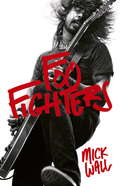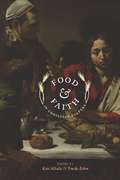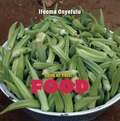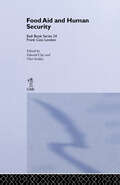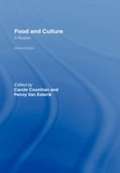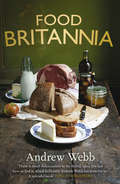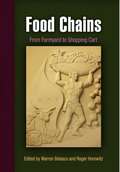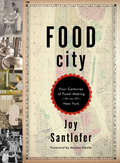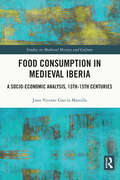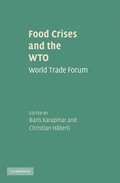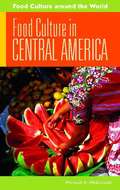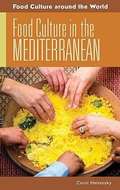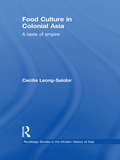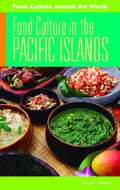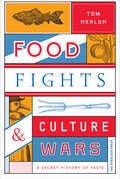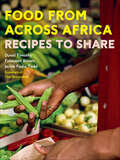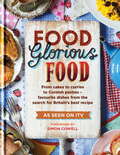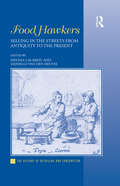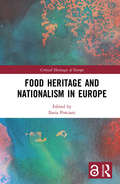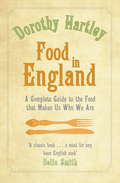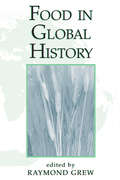- Table View
- List View
Fontana
by John Charles Anicic Jr.The self-proclaimed "City of Innovation" has a great tradition of reinventing itself. Today's Fontana was once known as "Rancho de San Bernardino." The first recorded owner, Don Antonia Maria Lugo, passed the land down to his sons, and in 1851, the Lugo brothers sold their stake to Mormon settlers, who soon relocated to Utah. Various agricultural developers, including A.B. Miller, saw potential in the land, changing its name to "Fontana" from its earlier railroad name "Rosena." But citrus and grain were not the main exports for long. During World War II, the city switched gears to become an industrial powerhouse as Southern California's leading steel producer. At the junction of Interstates 10 and 15, modern Fontana is a vital nexus of transportation and commerce, with the legendary Route 66 passing through its well-preserved downtown district and Route 99 through its southern boundary.
Foo Fighters
by Mick WallEveryone from Sir Paul McCartney and Jimmy Page to Queens of the Stone Age now relishes the chance to share a stage with Dave Grohl and his legendary Foo Fighters. The question is: why? Musical depth? Not really. Major success? Well, yes. Despite no longer shifting albums in the same quantity as they did twenty years ago, this band can still fill stadiums the world over (when Dave's not breaking his leg, of course).Long before Kurt Cobain blew his brains out in 1994, Dave Grohl was planning for a life after Nirvana. The unflinching bright sunlight to Cobain's permanent midnight darkness, Grohl had come from a similar broken home to his erstwhile band leader, but came out of the experience differently - brimming with positivity and a shrewd grasp of opportunities in the music industry.Did Grohl merely take the sonic blueprint of Nirvana and embellish it with a more life-affirming pop sheen? Of course he did. Every band in America that sold over a million records in the post-grunge 90s did the same. The difference was that Grohl had real credibility. And he knew it.With exclusive testimony from true insiders (including Krist Novoselic, Grohl's bass-playing partner in Nirvana, ex-girlfirends, record company executives, tour photographers and confidantes), this book is an exploration of the real story behind Grohl and the Foo Fighters - the only serious literary biography of the group and its leader, one of the most famous and critically bulletproof rock figures of the 21st century.
Food & Faith in Christian Culture
by Ken Albala Trudy EdenWithout a uniform dietary code, Christians around the world used food in strikingly different ways, developing widely divergent practices that spread, nurtured, and strengthened their religious beliefs and communities. These never-before published essays map the intersection of food and faith over the past five centuries, charting the complex relationship between religious eating habits and politics, social structure and culture. Theoretically rich and full of engaging portraits, essays consider the rise of food buying and consumerism in the fourteenth century, the Reformation ideology of fasting and its resulting sanctions against sumptuous eating, the gender and racial politics of sacramental food production in colonial America, and the struggle to define “enlightened” Lenten dietary restrictions in early modern France. Essays on the nineteenth century explore the religious implications of wheat growing and breadmaking among New Zealand’s Maori population and the revival of the Agape meal, or love feast, among American brethren in Christ Church. Twentieth-century topics include the metaphysical significance of vegetarianism, the role of diet in Greek Orthodoxy, American Christian weight loss programs, and the practice of silent eating rituals among English Benedictine monks. Two essays introduce the volume, with one explaining the important themes tying all the essays together, and the other surveying food’s part in developing and disseminating the teachings of Christianity and its tangible embodiment of the experience of faith.
Food (Look At This!)
by Ifeoma OnyefuluPhotographed in Mali by a multi-award-winning author, this is a unique and culturally diverse word book, with lots to look at and talk about. Mango, rice, plantain, okra...
Food Aid and Human Security (Routledge Research EADI Studies in Development #No. 24)
by Olav Schram Stokke Edward ClayFood aid is historically a major element of development aid to support longer-term development, and the primary response to help countries and peoples in crisis. This examination of food aid focuses in particular on institutional questions.
Food And Culture: A Reader
by Carole Counihan Penny Van EsterikFood and Culture: A Reader , is a solidly established classroom and reference text for scholars and students across the humanities and social sciences. It has been assigned in courses in anthropology, cultural studies, folklore, food studies, history, literature, philosophy, sociology, archeology, American studies, and more. Food and Culture remains significant because it demonstrates the centrality of cultural anthropology to the study of food. It is unique in providing an interdisciplinary collection of classic and cutting-edge articles in the field of food and culture studies that combine theory with ethnographic and historical data.
Food Britannia
by Andrew WebbBritish food has not traditionally been regarded as one of the world's great cuisines, and yet Stilton cheese, Scottish raspberries, Goosnargh duck and Welsh lamb are internationally renowned and celebrated. And then there are all those dishes and recipes that inspire passionate loyalty among the initiated: Whitby lemon buns and banoffi pie, for example; pan haggerty and Henderson's relish. All are as integral a part of the country's landscape as green fields, rolling hills and rocky coastline. In Food Britannia, Andrew Webb travels the country to bring together a treasury of regional dishes, traditional recipes, outstanding ingredients and heroic local producers. He investigates the history of saffron farming in the UK, tastes the first whisky to be produced in Wales for one hundred years, and tracks down the New Forest's foremost expert on wild mushrooms. And along the way, he uncovers some historical surprises about our national cuisine. Did you know, for example, that the method for making clotted cream, that stalwart of the cream tea, was probably introduced from the Middle East? Or that our very own fish and chips may have started life as a Jewish-Portuguese dish? Or that Alfred Bird invented his famous custard powder because his wife couldn't eat eggs?The result is a rich and kaleidoscopic survey of a remarkably vibrant food scene, steeped in history but full of fresh ideas for the future: proof, if proof were needed, that British food has come of age.
Food Chains
by Roger Horowitz Warren BelascoIn recent years, the integrity of food production and distribution has become an issue of wide social concern. The media frequently report on cases of food contamination as well as on the risks of hormones and cloning. Journalists, documentary filmmakers, and activists have had their say, but until now a survey of the latest research on the history of the modern food-provisioning system--the network that connects farms and fields to supermarkets and the dining table--has been unavailable. In Food Chains, Warren Belasco and Roger Horowitz present a collection of fascinating case studies that reveal the historical underpinnings and institutional arrangements that compose this system.The dozen essays in Food Chains range widely in subject, from the pig, poultry, and seafood industries to the origins of the shopping cart. The book examines what it took to put ice in nineteenth-century refrigerators, why Soviet citizens could buy ice cream whenever they wanted, what made Mexican food popular in France, and why Americans turned to commercial pet food in place of table scraps for their dogs and cats. Food Chains goes behind the grocery shelves, explaining why Americans in the early twentieth century preferred to buy bread rather than make it and how Southerners learned to like self-serve shopping. Taken together, these essays demonstrate the value of a historical perspective on the modern food-provisioning system.
Food City: Four Centuries of Food-Making in New York
by Marion Nestle Joy SantloferFrom the breweries of New Amsterdam to Brooklyn’s Sweet’n Low, a vibrant account of four centuries of food production in New York City. New York is hailed as one of the world’s “food capitals,” but the history of food-making in the city has been mostly lost. Since the establishment of the first Dutch brewery, the commerce and culture of food enriched New York and promoted its influence on America and the world by driving innovations in machinery and transportation, shaping international trade, and feeding sailors and soldiers at war. Immigrant ingenuity re-created Old World flavors and spawned such familiar brands as Thomas’ English Muffins, Hebrew National, Twizzlers, and Ronzoni macaroni. Food historian Joy Santlofer re-creates the texture of everyday life in a growing metropolis—the sound of stampeding cattle, the smell of burning bone for char, and the taste of novelties such as chocolate-covered matzoh and Chiclets. With an eye-opening focus on bread, sugar, drink, and meat, Food City recovers the fruitful tradition behind today’s local brewers and confectioners, recounting how food shaped a city and a nation.
Food Consumption in Medieval Iberia: A Socio-economic Analysis, 13th-15th Centuries (Studies in Medieval History and Culture)
by Juan Vicente García MarsillaFrom the banquets of kings and nobles to the daily struggle for the subsistence of the poor, food was already much more than a biological necessity in the Middle Ages: it was a social phenomenon full of meaning. In this book all the implications and meanings that food had on the Iberian Peninsula between the 13th and 15th centuries are analysed. Historical assessment of the region is particularly rewarding because of the quantity and variety of historical sources, and because of the coexistence in medieval Iberia of the three great monotheistic religions, Christianity, Judaism and Islam. Taking both economic and sociological perspectives, every aspect of food is analysed, from the commercialization of food production to its consumption, and from the evolution of culinary techniques to table manners.
Food Crises and the WTO
by Baris Karapinar Christian HäberliThe food and financial crises of 2008 and 2009 have pushed millions more people into poverty and hunger, while changing the parameters of international trade. Both crises have also challenged the fundamentals of WTO rules regulating agriculture, which had been designed to combat trade distortions due to artificially low-priced food commodities. This collection of essays examines to what extent the multilateral trading system contributes to food security in today's volatile markets. Bringing together a renowned group of expert economists, lawyers, environmental and development specialists, it offers a fresh and multi-dimensional perspective combining a strong economic analysis with a comprehensive legal assessment of the interface between food security and international trade regulation. Together, the contributions provide concrete policy recommendations on how the WTO could play a positive role in preventing or mitigating future food crises and promote global food security.
Food Culture In Central America
by Michael McdonaldFor high school students and general readers, McDonald (anthropology, Florida Gulf Coast U.) describes the food culture of Central America, with discussion of the region's history, geography, and climate, major foods and ingredients, cooking techniques, typical meals and cuisine in specific areas, eating out, special occasions and festivals, and diet and health, including malnutrition, hunger, anemia, obesity, and food aid programs. Recipes are included. Annotation ©2009 Book News, Inc., Portland, OR (booknews.com)
Food Culture In The Mediterranean
by Carol HelstoskyConsidering the territory from Portugal and Morocco east to Iraq and Turkey as a wildly diverse but single region, Helstory (history, U. of Denver) explores such matters as whether people eat out or at home, how religious rituals differ regarding food preparation, what people of the three desert religions eat on religious holidays, why the same few ingredients are prepared in so many different ways even in the same country, why demonstrating hospitality and good will with food is so important, and whether people still eat locally produced food or American fast-food and prepared food. Annotation ©2009 Book News, Inc., Portland, OR (booknews.com)
Food Culture in Colonial Asia: A Taste of Empire (Routledge Studies in the Modern History of Asia)
by Cecilia Leong-SalobirPresenting a social history of colonial food practices in India, Malaysia and Singapore, this book discusses the contribution that Asian domestic servants made towards the development of this cuisine between 1858 and 1963. Domestic cookbooks, household management manuals, memoirs, diaries and travelogues are used to investigate the culinary practices in the colonial household, as well as in clubs, hill stations, hotels and restaurants. Challenging accepted ideas about colonial cuisine, the book argues that a distinctive cuisine emerged as a result of negotiation and collaboration between the expatriate British and local people, and included dishes such as curries, mulligatawny, kedgeree, country captain and pish pash. The cuisine evolved over time, with the indigenous servants preparing both local and European foods. The book highlights both the role and representation of domestic servants in the colonies. It is an important contribution for students and scholars of food history and colonial history, as well as Asian Studies.
Food Culture in the Pacific Islands
by Roger HadenWritten for students, general readers, and foodies alike, Haden's (gastronomy, history of food and drink, U. of Adelaide, Australia) text provides a solid introduction to the food culture of the 22 diverse Pacific Ocean countries located on some 12,000 islands spread across roughly one-third of the earth's surface. A general introduction is followed by an historical overview of the region, description of major foods and ingredients, cooking techniques and technologies, typical meals, regional specialties, traditional dining practices versus eating out, special foods for special occasions, and diet and health issues. In addition to a map of the region, a timeline of key historical and food-related events, a glossary of terms, and a list of online, video/film, and print resources, the text includes a sampling of traditional recipes. Illustrated with b&w photographs. Annotation ©2009 Book News, Inc., Portland, OR (booknews.com)
Food Fights & Culture Wars: A Secret History of Taste
by Tom NealonIn this eclectic book of food history, Tom Nealon takes on such overlooked themes as carp and the Crusades, brown sauce and Byron, and chillies and cannibalism, and suggests that hunger and taste are the twin forces that secretly defined the course of civilization. Through war and plague, revolution and migration, people have always had to eat. What and how they ate provoked culinary upheaval around the world as ingredients were traded and fought over, and populations desperately walked the line between satiety and starvation. Parallel to the history books, a second, more obscure history was also being recorded in the cookbooks of the time, which charted the evolution of meals and the transmission of ingredients around the world. Food Fights and Culture Wars: A Secret History of Taste explores the mysteries at the intersection of food and society, and attempts to make sense of the curious area between fact and fiction. Beautifully illustrated with material from the collection of the British Library, this wide-ranging book addresses some of the fascinating, forgotten stories behind everyday dishes and processes. Among many conspiracies and controversies, the author meditates on the connections between the French Revolution and table settings, food thickness and colonialism, and lemonade and the Black Plague.
Food For The Hungry: The Reluctant Society
by Judith A. SegalFood for the Hungry: The Reluctant Society by Judith Segal Series:Policy studies in employment and welfare
Food From Across Africa: Recipes to Share
by Duval Timothy Jacob Fodio ToddDiscover the amazing cuisine of Africa with this beautiful full-color cookbook featuring classical and modern African dishes.With its diverse, delicious flavors, African food is “some of the best on the planet,” yet remains little known to many in the wider world. To introduce this wonderful cuisine, Duval Timothy, Jacob Fodio Todd, and Folayemi Brown started their popular bi-monthly London supper club The Groundnut to showcase the food of their childhoods, dishes that reflect their heritage in Western and Eastern Africa.Based on their sold-out events, Food from Across Africa features both traditional recipes, many of which have been passed down through the generations, as well as experimental dishes using new ingredients and combinations: from the fragrant and ubiquitous West African dish, jollof rice, to innovative modern offerings like aromatic star anise and coconut chicken served in a steaming plantain leaf. Food from Across Africa includes nine complete menus with dishes that complement and enhance one another—from cocktails and juices to main courses, vegetables, sides, and desserts. Instead of making explicit distinctions, the menus represent the way these dishes fit together, whether attached by season, dominant flavors, or by another unifying point of inspiration.Easy to follow and cook, each recipe includes a short history and uses ingredients found in local markets. Pork in Tamarind, Mustard Prawns, Baked Broccoli Falafel, Pineapple Jam, Spinach & Green Bean Salad with Peanut Pesto, Banana Almond Cake, Pickled Peppers, Baked Plantain, and much more—the mouthwatering fare in Food from Across Africa is meant to be eaten communally, with family, friends, and neighbors, and enjoyed with all the senses. “Our food encourages tactility, with influences form our childhoods growing up eating freshly picked mangoes sprinkled with salty chili powder, being served juice in a peeled, cored, and squeezed orange and hand rolling and dunking balls of eba into okra soup then straight into your mouth.”A celebration of a fascinating and flavorful culture, bursting with dozens of gorgeous full-color photos, Food from Across Africa is a bounty of delights, presenting food that is simple, balanced, beautiful, and fabulous to share.
Food Glorious Food: Family Recipes for the Nation's Favourite Dishes
by Mitchell BeazleyEvery recipe tells a story. And every family has one - a recipe that tugs at your heartstrings, makes you laugh, brings back memories and sums up all that's great about food: its ability to delight our senses, bring people together and spread joy and happiness. Food, Glorious Food! - the book of the major new ITV1 series presented by Carol Vorderman - will be crammed full of these heart-warming and delicious recipes. Packed full of dishes from ordinary members of the public, the book will feature the food that we all love to cook and want to know how to cook. Those dishes will form the spine of the Food, Glorious Food! book. But each recipe will be so much more than just a list of ingredients and a set of cooking instructions: that's because each will be accompanied by the inspiring story of its creation, along with fascinating and revealing photos plucked from the personal archives of the recipe's creator and their family. The featured dishes will encompass old favourites like Lancashire Hot Pot, Cornish Pasties and Bakewell Tart, alongside new and inventive fusions of flavours that simply have to be tasted. Some dishes will incorporate quirky twists - for example, an extra ingredient that was originally added by mistake - while other recipes will stick to time-honoured techniques, handed down through multiple generations of the same family. In between the featured recipes will be thoughtful reflections on Britain's food heritage and the nation's love affair with home cooking. This is the definitive guide to the UK's best recipes, written for the people of Great Britain, by the people of Great Britain.
Food Hawkers: Selling in the Streets from Antiquity to the Present (The History of Retailing and Consumption)
by Melissa Calaresu Danielle Van HeuvelStreet vendors are ubiquitous across the world and throughout history. They are part of almost any distribution chain, and play an important role in the marketing of consumer goods particularly to poorer customers. Focusing on the food trades, this multi-disciplinary volume explores the dynamics of street selling and its impact on society. Through an investigation of food hawking, the volume both showcases the latest results from a subject that has seen the emergence of a significant body of innovative and adventurous scholarship, and advances the understanding of street vending and its impact on society by stimulating interdisciplinary and cross-disciplinary discussions. Covering a time span of approximately two millennia, from antiquity to the present, the book includes chapters on Europe and Asia, and covers a diverse range of themes such as the identity of food sellers (in terms of gender, ethnicity, and social status); the role of the street seller in the distribution of food; the marketing of food; food traders and the establishment; the representation of food hawkers; and street traders and economic development. By taking a dynamic approach, the collection has enabled its contributors to cross disciplinary boundaries and engage in discussions which extend beyond the limits of their own academic fields, and thus provide a fresh appreciation of this ancient phenomenon.
Food Heritage and Nationalism in Europe (Critical Heritages of Europe)
by Ilaria PorcianiFood Heritage and Nationalism in Europe contends that food is a fundamental element of heritage, and a particularly important one in times of crisis. Arguing that food, taste, cuisine and gastronomy are crucial markers of identity that are inherently connected to constructions of place, tradition and the past, the book demonstrates how they play a role in intangible, as well as tangible, heritage. Featuring contributions from experts working across Europe and beyond, and adopting a strong historical and transnational perspective, the book examines the various ways in which food can be understood and used as heritage. Including explorations of imperial spaces, migrations and diasporas; the role of commercialisation processes, and institutional practices within political and cultural domains, this volume considers all aspects of this complex issue. Arguing that the various European cuisines are the result of exchanges, hybridities and complex historical processes, Porciani and the chapter authors offer up a new way of deconstructing banal nationalism and of moving away from the idea of static identities. Suggesting a new and different approach to the idea of so-called national cuisines, Food Heritage and Nationalism in Europe will be a compelling read for academic audiences in museum and heritage studies, cultural and food studies, anthropology and history. Chapters 1,2,4,6 and 12 of this book are available for free in PDF format as Open Access from the individual product page at www.routledge.com. They have been made available under a Creative Commons Attribution-Non Commercial-No Derivatives 4.0 license
Food History: A Feast of the Senses in Europe, 1750 to the Present (Routledge Studies in Modern History)
by Martin Bruegel Peter J. Atkins Sylvie VabreThis pioneering book elevates the senses to a central role in the study of food history because the traditional focus upon food types, quantities, and nutritional values is incomplete without some recognition of smell, touch, sight, hearing, and taste. Eating is a sensual experience. Every day and at every meal the senses of smell, touch, sight, hearing, and taste are engaged in the acts of preparation and consumption. And yet these bodily acts are ephemeral; their imprint upon the source material of history is vestigial. Hitherto historians have shown little interest in the senses beyond taste, and this book fills that research gap. Four dimensions are treated: • Words, Symbols and Uses: Describing the Senses – an investigation of how specific vocabularies for food are developed. • Industrializing the Senses – an analysis of the fundamental change in the sensory qualities of foods under the pressure of industrialization and economic forces outside the control of the household and the artisan producer. • Nationhood and the Senses – an exploration of how the combination of the senses and food play into how nations saw themselves, and how food was a signature of how political ideologies played out in practical, everyday terms. • Food Senses and Globalization – an examination of links between food, the senses, and the idea of international significance. Putting all of the senses on the agenda of food history for the first time, this is the ideal volume for scholars of food history, food studies and food culture, as well as social and cultural historians. Putting all of the senses on the agenda of food history for the first time, this is the ideal volume for scholars of food history, food studies and food culture, as well as social and cultural historians.
Food In England: A complete guide to the food that makes us who we are
by Dorothy HartleyDorothy Hartley's FOOD IN ENGLAND became an instant classic when it was first published in 1954, and has had a deep influence on countless English cooks and food writers since.Hartley's love of the infinite variety of English cooking and her knowledge of British culture and history show why our food should never be considered dull or limited. There are unusual dishes such as the Cornish Onion and Apple Pie, and she describes some delicious puddings, cakes and breads, including an exotic violet flower ice cream, an eighteenth century coconut bread and Yorkshire teacakes.An irresistible window into centuries of culture, and illuminated with Hartley's own lively illustrations, FOOD IN ENGLAND is an unforgettable tour through culinary history and a unique insight into England's past.
Food In England: A complete guide to the food that makes us who we are
by Dorothy HartleyDorothy Hartley's FOOD IN ENGLAND became an instant classic when it was first published in 1954, and has had a deep influence on countless English cooks and food writers since.Hartley's love of the infinite variety of English cooking and her knowledge of British culture and history show why our food should never be considered dull or limited. There are unusual dishes such as the Cornish Onion and Apple Pie, and she describes some delicious puddings, cakes and breads, including an exotic violet flower ice cream, an eighteenth century coconut bread and Yorkshire teacakes.An irresistible window into centuries of culture, and illuminated with Hartley's own lively illustrations, FOOD IN ENGLAND is an unforgettable tour through culinary history and a unique insight into England's past.
Food In Global History (Global History Ser.)
by Raymond GrewExperts from a variety of disciplines place food in the framework of global history, looking at the global connections of ecology, public policy, diet, and customs on several continents.. In Food in Global History , experts on food from a variety of fields assess the relationship between global history and what people eat. Using the latest research, they address topics from public policy and international aid to cultural identity, from ecology to historical patterns of change. Individual chapters on countries in Asia, the Americas, Africa, and Europe employ contemporary data and evidence from centuries past. }Social scientists have studied foods in many different ways. Historians have most often studied the history of specific foods, and anthropologists have emphasized the role of food in religious rituals and group identities. Sociologists have looked primarily at food as an indicator of social class and a factor in social ties, and nutritionists have focused on changing patterns of consumption and applied medical knowledge to study the effects of diet on public health. Some scholars from these and other disciplines have studied the economic and political connections created around commerce in food, regionally and around the world. Now, all of these perspectives are brought together in a single volume. Fifteen specialists currently working in Canada, England, France, Guatemala, Norway, and the United States come together to apply their expert knowledge of food and food consumption in a new context, global history. In general essays and case studies, they reflect on the connections across space and time in what people eat and assess historical patterns of change in the human diet.The book begins with a consideration of the relationship between food and global history. Part One considers the global history of the ecology of food production, the contrasting impact of New World foods on India and China, the effects of global tourism, and the interaction between identity, migration, and diet. The selections in Part Two study the impact of public policy, comparing the countries of the former Soviet bloc with Scandinavia and Western Europe, analyzing the effects of international assistance on West Africa, and looking at changes in childhood nutrition in developing countries. Chapters in Part Three study nutritional change, the dietary effects of increased wealth, and the Mad Cow crisis in terms of global systems. Part Four investigates the relationship of global change to the ideologies and practices of the family meal, of food and cultural identity in Japan, and the American counterculture. }

